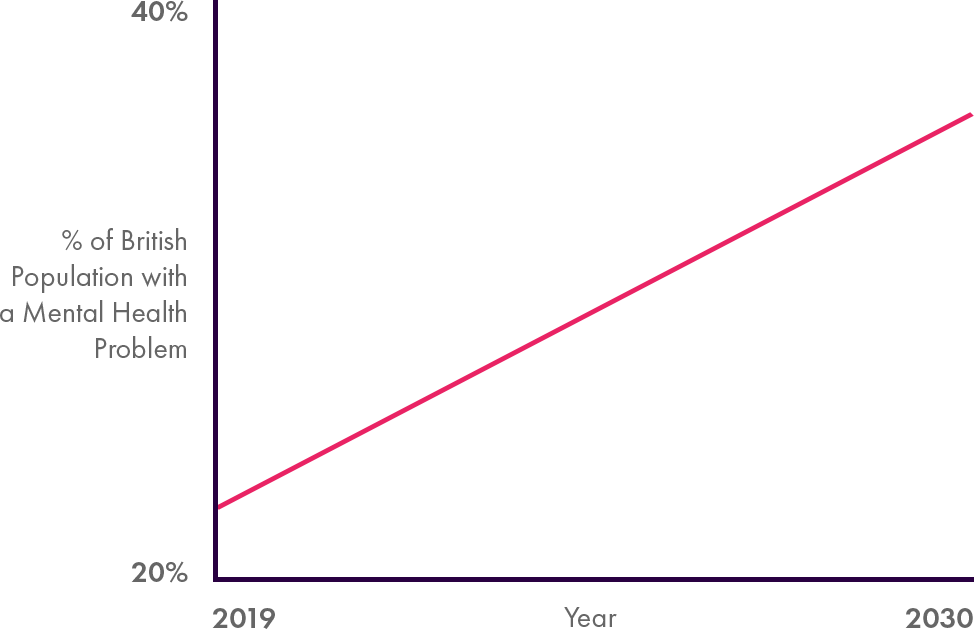Anxiety Disorders
Although the symptoms of Anxiety Disorders are similar throughout each type, there are some subtle differences.
Click on each disorder to learn more.
- Generalised Anxiety Disorder
- Panic Disorder
- Post-Traumatic Stress Disorder
- Obsessive Compulsive Disorder
- Social Anxiety Disorder
- Phobia
Generalised Anxiety Disorder (GAD)
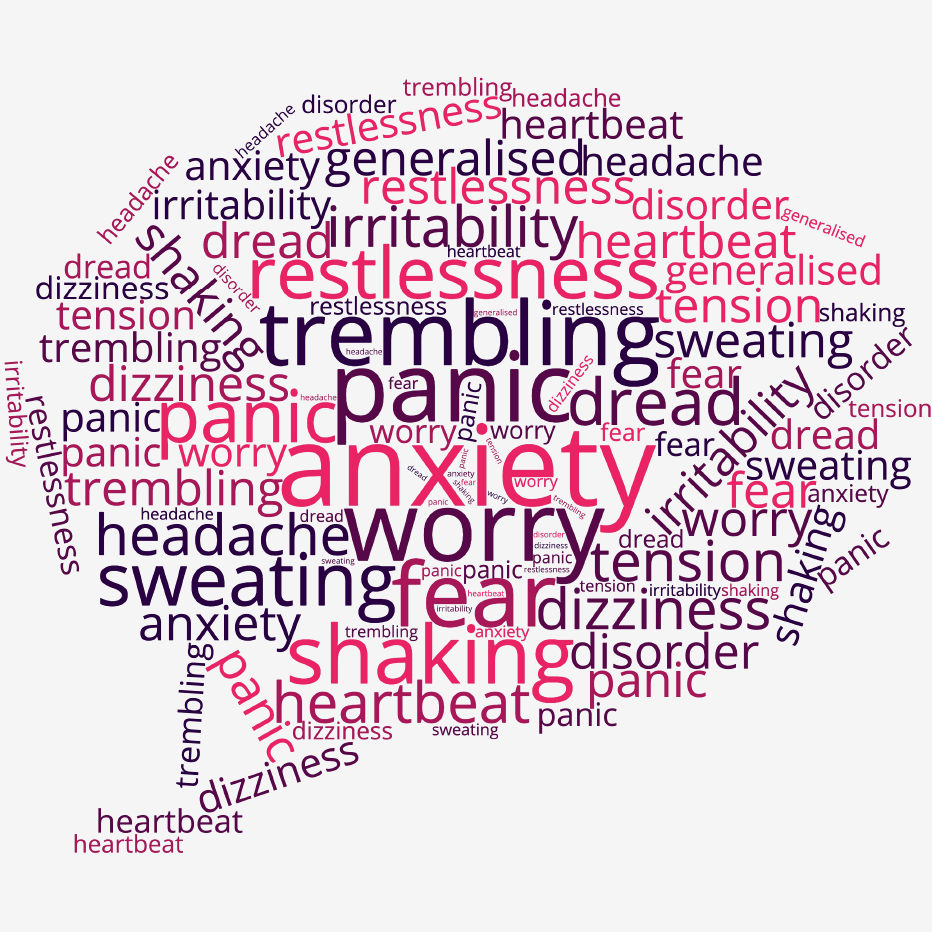
Panic Disorder
Panic Disorder is where an individual has sudden feelings of fear or panic. This can result in panic attacks. Most panic attacks last 5-20 minutes. Although they are frightening, panic attacks are not dangerous.
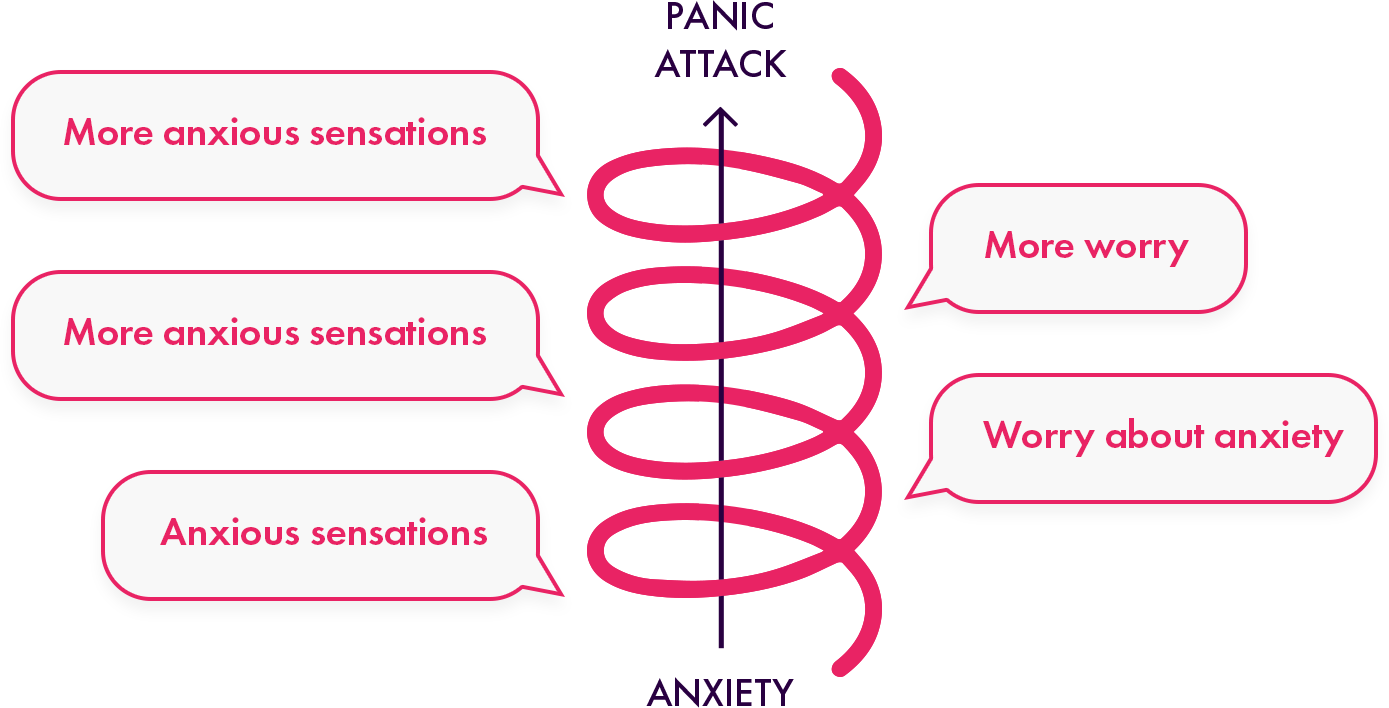
Support: What to do if someone has a panic attack
1) Recognise the situation: spot the warning signs of a panic attack early on. Warning signs usually include: headaches, sudden panic, heart racing, hyperventilating (rapid breathing), sweating, stomach cramps, dizziness / nausea and trembling.
2) Put the individual at ease: reassure them that everything will be ok. Get them into a quiet area. Understand what they are saying, and don’t tell them to calm down. Try and encourage slow breathing. Wait until the panic attack subsides.
3) After the panic attack has finished, encourage them to see their GP if they haven’t previously been diagnosed with a panic disorder. If they have been previously diagnosed with Panic disorder continually support them.
Post-Traumatic Stress Disorder (PTSD)
Traumatic events include:
- Witnessing death in situations of conflict
- Road traffic accidents
- Previous abuse
Obsessive Compulsive Disorder (OCD)
OCD is a condition where people have obsessive thoughts and compulsive behaviours.
The obsession is often an unhelpful thought, image or urge that causes feelings of anxiety.
The compulsion leads to behaviours that attempt to relieve the anxiety caused by the obsession. This leads to a feeling of temporary relief.
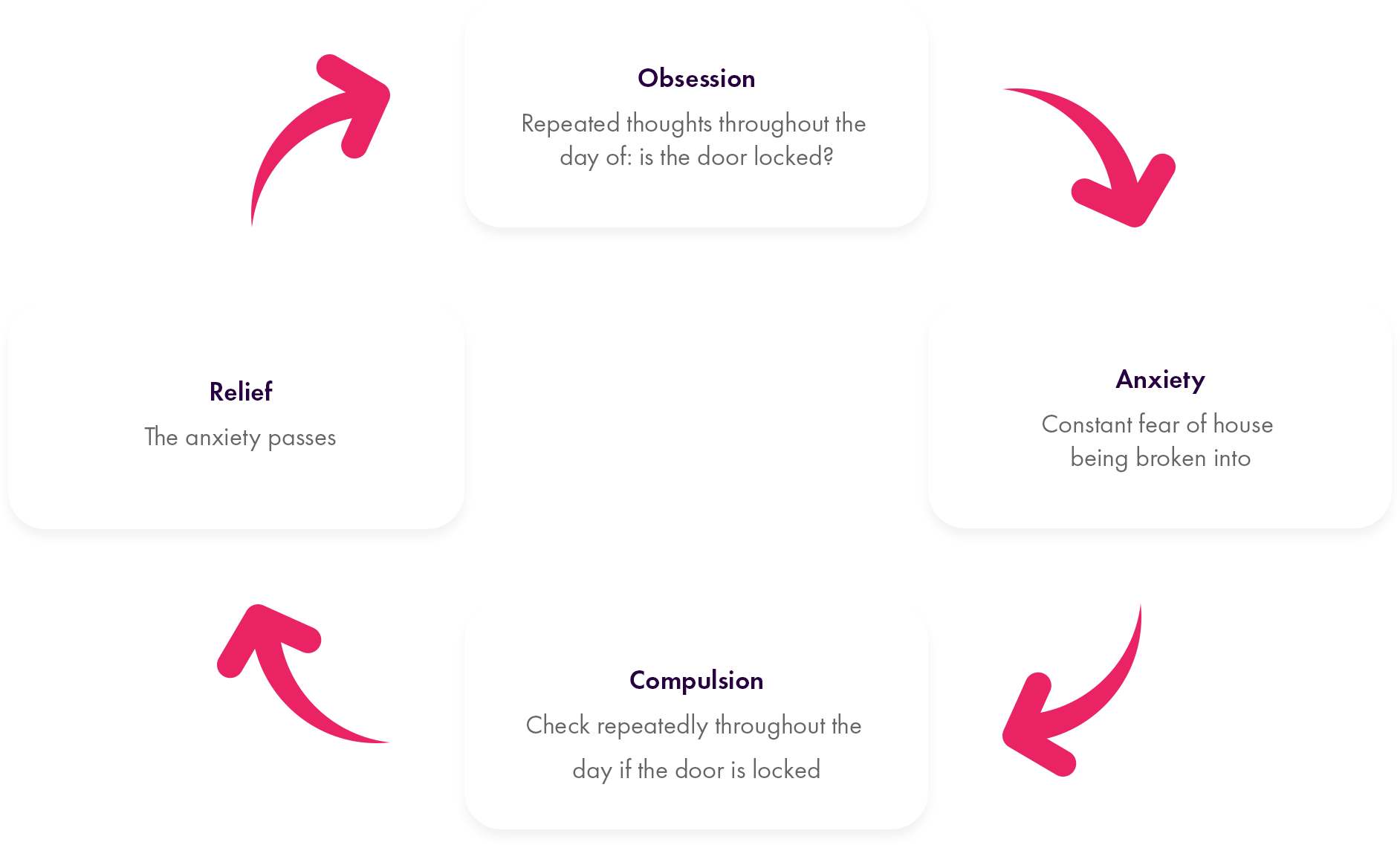
Social Anxiety Disorder
Social Anxiety Disorder is when an individual has a long-lasting overwhelming fear of social situations [1](NHS., 2019).
If you know or detect someone has Social Anxiety Disorder, carry on inviting them to social occasions (even if they keep saying no). Feeling excluded can make the anxiety worse. However, avoid pressuring or commenting on if they don’t turn up.
*Alcohol is commonly used by socially anxious people to manage social situations. This in itself can become problematic.
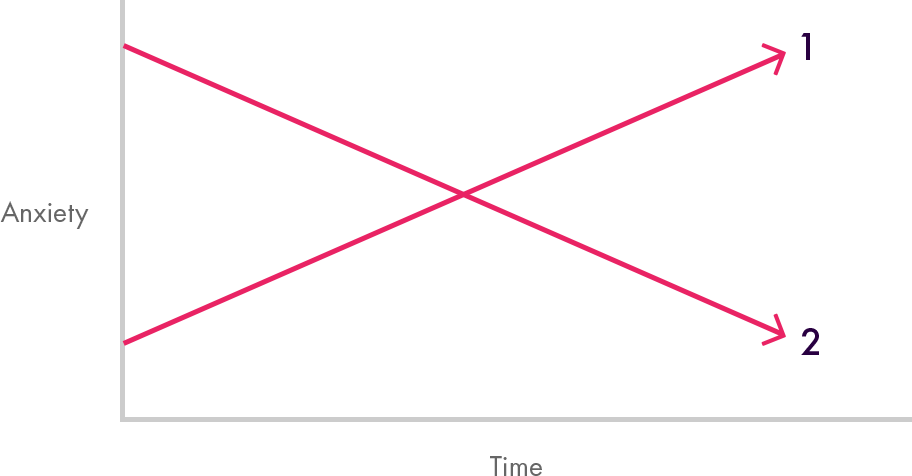
1 = Avoiding social situations:
Although anxiety is only moderate to start with (as they’ve avoided the social situation), it increases as time goes on.
2 = Attending social situations:
‘Facing the fear’ by regularly attending social situations will reduce anxiety in the long-term.
Phobia
A phobia is the development of an irrational fear, related to being exposed to specific objects or situations.
Phobias can be of any object or situation, usually in the natural environment.
Common phobias include:

